We are delighted to announce Dominik Konkolewicz (Miami University) as the recipient of the 2022 Polymer Chemistry lectureship.
This award, now in its eighth year, honours an early-career researcher who has made significant contribution to the polymer field. The recipient is selected by the Polymer Chemistry Editorial Board from a list of candidates nominated by the community.
 |
‘I think the fantastic thing about Polymer Chemistry is that the journal has a clear focus on the development and evaluation of polymers, while still covering a wide range of topics ranging from fundamental kinetic analysis and mechanistic work through to 3D printing and bio-applications of polymers.’
|
Dominik Konkolewicz earned a Bachelors of Science degree at the University of Sydney (Australia) in 2006, majoring in Chemistry and Mathematics. He continued at the University of Sydney to complete his PhD (2011) working with Dr. Sébastien Perrier on polymerization kinetics and branched polymer synthesis. He went on to complete postdoctoral research at Carnegie Mellon University in Pittsburgh (USA), working with Dr. Krzysztof Matyjaszewski on mechanisms of complex reactions and applications of precisely defined polymers. In 2014, Dominik joined the Department of Chemistry and Biochemistry at Miami University in Oxford OH (USA) as an Assistant Professor, with promotion to Associate Professor in 2019. He will start as full professor in Fall 2022. The Konkolewicz group explores a wide range of topics in Polymer Chemistry, including radical polymerization mechanisms, dynamically bonded polymer materials, light driven reactions, bioconjugates, and polymer based self-assembly. Dominik has published over 130 research articles in polymer chemistry and polymer science, with a particular focus on developing fundamental science to facilitate the design of functional materials. Dominik can be found on Twitter @PolyKonkol and the Konkolewicz group can be found on Twitter @konkolgroup.
Check out Dominik’s recent publication in Polymer Chemistry, ‘A general model for the ideal chain length distributions of polymers made with reversible deactivation’.
This is free to read until 21st July 2022, along with his other publications in our lectureship winners collection. You can find articles from all our previous lectureship winners in the collection too.
Read our interview with Dominik below:
How has your research evolved from your first article to this most recent article?
My first article in Polymer Chemistry, published as a PhD student, focused on modelling complex polymers. Since then, our group has maintained its core of developing fundamental mechanistic chemistry, while expanding into a wide range of topics such as responsive polymers and biomaterials.
What excites you most about your area of research and what has been the most exciting moment of your career so far?
Things that excite me at the moment is the development of basic polymer science that can be connected to ongoing challenges in our fields. Thinking how we use basic science to contribute towards solutions in sustainability and efficiency is really an important area. The most exciting moments in my career are the growth of my students and trainees. Seeing early career scientists and students move towards their long-term career goals and their ability to contribute to ongoing problems is very rewarding.
In your opinion, what are the most important questions to be asked/answered in your field of research?
Current and important questions in the field include: how can basic concepts in mechanistic polymer science be translated to next generation materials; and how can we effectively discuss science with the community broadly. We need a balance of fundamental science, but also applying what we know already to current challenges.
How do you feel about Polymer Chemistry as a place to publish research on this topic?
I really value Polymer Chemistry as a forum to publish work across the topics of mechanism and kinetics, polymer-based materials synthesis and analysis of structure property relationships across a range of polymer-based materials. I think the fantastic thing about Polymer Chemistry is that the journal has a clear focus on the development and evaluation of polymers, while still covering a wide range of topics ranging from fundamental kinetic analysis and mechanistic work through to 3D printing and bio-applications of polymers.
Which of your Polymer Chemistry publications are you most proud of and why?
Clearly this is a really difficult question, because I am very proud of all our group’s publications in Polymer Chemistry. However, if I had to choose one it would be B. Zhang, Z. A. Digby, J. A. Flum, E. M. Foster, J. L. Sparks, D. Konkolewicz, ‘Self-Healing, Malleable and Creep Limiting Materials using both Supramolecular and Reversible Covalent Linkages’, Polymer Chemistry 2015, 6, 7368-7372, DOI: 10.1039/C5PY01214G. This is our first publication on dynamically bonded materials and mechanical testing. I am exceptionally proud of how our team members gained new skills in dynamic chemistry and materials characterization in such a short time, and used these skills to combine two dynamic chemistries to give responsive and stable materials.
In which upcoming conferences or events (online or in person) may our readers meet you?
COVID-19 has really negatively impacted our ability to plan for future travel, but I am planning to attend the Fall 2022 ACS meeting in person, as well as a couple of meetings in 2023 such as the 2023 Polymers Gordon Research Conference.
Can you share one piece of career-related advice or wisdom with early career scientists?
The advice I would share is don’t be shy about reaching out to trusted individuals (such as colleagues or former advisors) for feedback. Since everyone brings something unique and valuable to the chemistry community, believe in your skills and the importance of your contributions.
How do you spend your spare time?
In my time away from the lab, I enjoy spending time with my family and our cats, cooking and baking new recipes, and running or cycling outdoors.
We would like to thank everybody who nominated a candidate for the 2022 Polymer Chemistry Lectureship. The Editorial Board had a very difficult task in choosing a winner from the many excellent and worthy candidates.
Please join us in congratulating Dominik on winning this award!
Comments Off on 2022 Polymer Chemistry Lectureship awarded to Dominik Konkolewicz


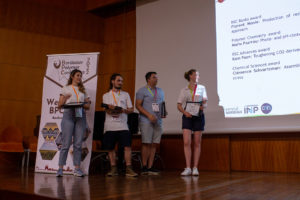
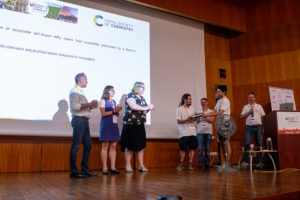









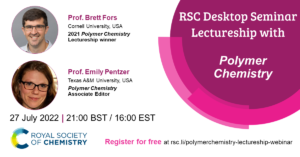
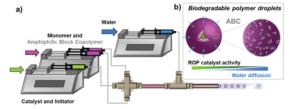

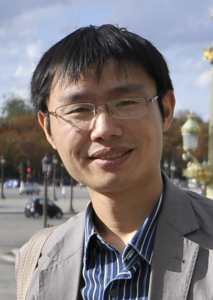 Saihu Liao studied chemistry at Huazhong University of Science and Technology, and obtained his bachelor degree in 2005. After two years of graduate study with Prof. Yuefa Gong at the same university, he joined Prof. Benjamin List’s group at the Max-Planck-Institute for Coal Research (MPI-KOFO), Germany, where he obtained his doctoral degree in organic chemistry in 2011. Then, he returned to China and joined Prof. Yong Tang’s group as a research associate at the Shanghai Institute of Organic Chemistry (SIOC), Chinese Academy of Sciences. In September 2016, he started his independent career at Fuzhou University, where he was promoted to full professor in 2017. His current research focuses on the development of new organocatalysts and new strategies for polymerization, with a special concern to photo-control and tacticity-regulation.
Saihu Liao studied chemistry at Huazhong University of Science and Technology, and obtained his bachelor degree in 2005. After two years of graduate study with Prof. Yuefa Gong at the same university, he joined Prof. Benjamin List’s group at the Max-Planck-Institute for Coal Research (MPI-KOFO), Germany, where he obtained his doctoral degree in organic chemistry in 2011. Then, he returned to China and joined Prof. Yong Tang’s group as a research associate at the Shanghai Institute of Organic Chemistry (SIOC), Chinese Academy of Sciences. In September 2016, he started his independent career at Fuzhou University, where he was promoted to full professor in 2017. His current research focuses on the development of new organocatalysts and new strategies for polymerization, with a special concern to photo-control and tacticity-regulation. Shaofeng Liu is a professor at College of Polymer Science and Engineering at Qingdao University of Science and Technology. He received his B.S. in 2005 from Central South University, obtained his Ph.D. in 2011 from Institute of Chemistry Chinese Academy of Sciences (ICCAS) and Université de Strasbourg (UDS) under the supervision of Prof. Wen-Hua Sun and Prof. Pierre Braunstein. He then joined the group of Prof. Tobin J. Marks at Northwestern University as a postdoctoral fellow (2011-2014). In 2015, he moved to Qingdao University of Science and Technology and started his independent research career. His current research interests include organometallic catalysts for olefin polymerization and organocatalysts for sustainable polymers by ring-opening polymerization.
Shaofeng Liu is a professor at College of Polymer Science and Engineering at Qingdao University of Science and Technology. He received his B.S. in 2005 from Central South University, obtained his Ph.D. in 2011 from Institute of Chemistry Chinese Academy of Sciences (ICCAS) and Université de Strasbourg (UDS) under the supervision of Prof. Wen-Hua Sun and Prof. Pierre Braunstein. He then joined the group of Prof. Tobin J. Marks at Northwestern University as a postdoctoral fellow (2011-2014). In 2015, he moved to Qingdao University of Science and Technology and started his independent research career. His current research interests include organometallic catalysts for olefin polymerization and organocatalysts for sustainable polymers by ring-opening polymerization. 


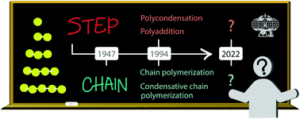

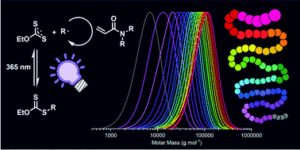
 Nick Warren is an Associate Professor at School of Chemical and Process Engineering at the University of Leeds. He was awarded an Masters in Chemistry from the University of Bristol in 2005 following which he conducted two years industrial research. He then moved to the University of Sheffield where he obtained a PhD in Polymer Chemistry. He continued as a postdoctoral researcher in Sheffield working in the area of polymerisation-induced self-assembly (PISA) until 2016, when he moved to Leeds to start his independent research career. His research group aims to design a new generation of sustainable and functional polymer materials by exploiting the latest advances in both polymer chemistry and self-optimising reactor technologies equipped with advanced online monitoring and computer control. He can be found on Twitter
Nick Warren is an Associate Professor at School of Chemical and Process Engineering at the University of Leeds. He was awarded an Masters in Chemistry from the University of Bristol in 2005 following which he conducted two years industrial research. He then moved to the University of Sheffield where he obtained a PhD in Polymer Chemistry. He continued as a postdoctoral researcher in Sheffield working in the area of polymerisation-induced self-assembly (PISA) until 2016, when he moved to Leeds to start his independent research career. His research group aims to design a new generation of sustainable and functional polymer materials by exploiting the latest advances in both polymer chemistry and self-optimising reactor technologies equipped with advanced online monitoring and computer control. He can be found on Twitter